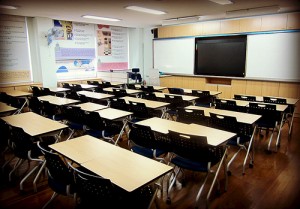After two decades of trial-runs, school voucher programs occupy a growing place across the U.S. educational landscape. In Arizona, the District of Columbia, Florida, Georgia, Indiana, Louisiana, Ohio, Utah and Wisconsin, public funding supports private school attendance by students with varied needs and limited family resources. At least ten states offset private tuition with refunds or credits offered through their tax codes. As such programs proliferate, it is important to take stock of what researchers have found so far about the impact of vouchers on student achievement and school performance.
Vouchers and Test Scores
Do vouchers improve student test scores? Major studies have provided mixed indications:
- Research on Milwaukee’s pioneering public voucher program launched in 1991 has been inconsistent. Independent evaluations for the state, the most recent of which I helped to lead, have found no differences in test scores between voucher and public school students. But at least two earlier studies found positive effects for voucher students, especially on math tests.
- Evidence from Cleveland shows a similar pattern of mixed results at different times from various research teams. Positive assessments have come from studies based on experiments—where vouchers are randomly awarded to some students applying to go to over-subscribed schools.
- Experimental-type studies of privately funded, voucher-like programs in three large cities also suggest positive results—especially for African American student test scores. In the District of Columbia, official evaluations found little overall effect from vouchers, except for positive effects on reading scores after the 3rd year of tracking.
- A recent experimental-type study of Florida’s tuition tax credit program found positive impacts on the test scores of students using the credits.
Broader Impacts on Student Attainment
Even when they have little impact on test scores, vouchers can still boost overall student attainment. Three recent studies of voucher use in major metropolitan areas have demonstrated significant increases in either high school graduation or college enrollment. We arrived at such results in Milwaukee (albeit in a study not based on a randomized design); larger impacts appeared in two other studies that did use randomized designs to look at a private voucher program in New York City and a publicly funded program in Washington DC. The finding that vouchers have larger effects on overall attainment than on test scores has also emerged from recent multi-state studies of charter schools.Do Vouchers Indirectly Help Students Who Remain in Public Schools?
Supporters sometimes claim that vouchers improve student outcomes not just for youngsters who use them to enroll in private or charter schools, but also for other students who remain in public schools. Simple economic logic predicts that public schools might up their game in response to market pressures induced by widespread voucher take-up. But here again, as in research on the direct impact of vouchers, evidence is mixed. Studies in Milwaukee and Florida have shown test score improvements for public school students when voucher schools were operating in the community, but these effects have been small. Another Milwaukee study found no impact for public school students. So far, indirect effects seem to exist more in theory than in evidence.
Who Uses Vouchers?
Perhaps the most controversial issue is whether school vouchers “cream-skim” more advantaged students away from public schools. We know from studies of private schools in general that their students tend to be more affluent and white. But most voucher programs are located in high-poverty urban areas, and research in Washington DC, Florida, and Wisconsin has shown that students who use these programs tend to be minorities from poorer families (indeed, many voucher programs have income limits). Yet race and income aren’t the only story. Questions also arise about access to vouchers and private schools for students with special learning needs. Special education students are slightly less likely than others to use vouchers in Milwaukee.

Who stays in public schools may be just as important as who obtains and uses vouchers to attend private or charter schools. In recent research, my colleagues and I have shown that voucher students who return to public schools are more likely to be low-performing compared to other voucher students; and they are also more likely to be minorities. Interestingly, for some of these students, returning to public school appears to have a beneficial effect on subsequent test scores, suggesting that public schools may have been better for some of them all along.
School Accountability and the Future of Voucher Programs
So far, private schools that receive voucher funds have faced few testing or public reporting requirements. Many voucher supporters see this as legitimate for private schools whose academic missions may not align with the standards set by public education authorities. Optimists also tend to think that market pressures will automatically weed out low-quality private schools. But skeptics argue with some justification that private schools receiving taxpayer support should be required to report the same information as their public counterparts. Such reporting could allow parents to avoid sending children to substandard private schools in the first place. Arguably, a functioning market requires good information. My colleagues and I have shown that requiring Milwaukee voucher schools to report test results can increase their students’ scores.
With the expansion of voucher programs and school choice, provable and publicly visible results are likely to become increasingly important to parents and policymakers. Despite some demonstrated positive effects for students, the capacity of voucher-funded private schools to achieve sustained and widespread improvements remains unclear. Research must continue.

 Research to Improve Policy: The Scholars Strategy Network seeks to improve public policy and strengthen democracy by organizing scholars working in America's colleges and universities. SSN's founding director is Theda Skocpol, Victor S. Thomas Professor of Government and Sociology at Harvard University.
Research to Improve Policy: The Scholars Strategy Network seeks to improve public policy and strengthen democracy by organizing scholars working in America's colleges and universities. SSN's founding director is Theda Skocpol, Victor S. Thomas Professor of Government and Sociology at Harvard University.